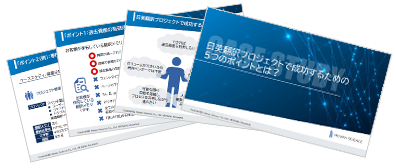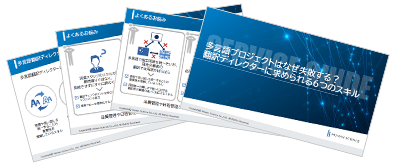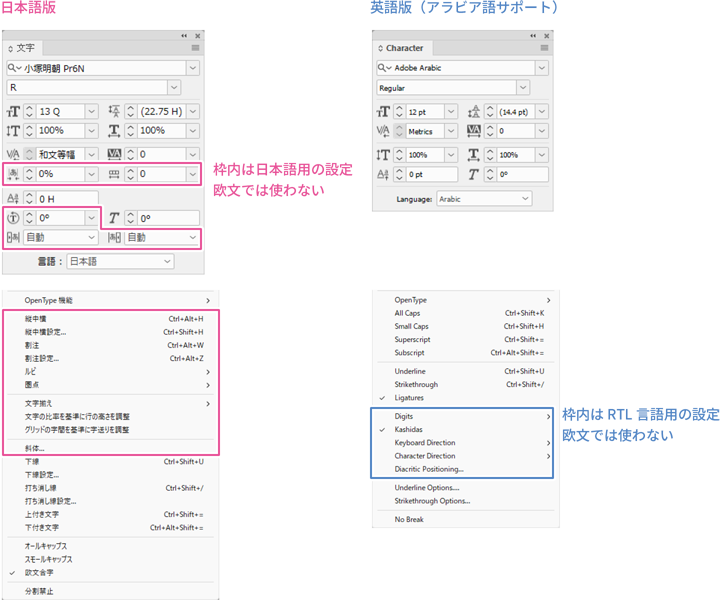Machine translation only recognizes the content present in the original text and generates a translation, so it cannot read between the lines or appropriately reflect omitted content in the translation. However, in Japanese, it is common to omit various elements, including the subject, which can lead to unnatural or, in some cases, incomprehensible translations generated by machine translation.
This time, I would like to introduce how to address such issues in post-editing, along with some examples.
- Table of Contents
-
1. Example reflecting the omitted content in the original text①
- • Original text: This will be cleared by the following operation.
- • Machine Translation: It will be cleared by the following operation.
- • After correction: The values are cleared by the following operations.
In this example, the subject of "will be cleared" is omitted in the original text, causing the machine translation to be unable to recognize the subject, resulting in the use of the pronoun "It." The subject is (multiple) values, so it was appropriately reflected as "The values" in the post-editing.
(Note: Since 'operation' refers to multiple actions in context, it has been corrected to 'operations'.)
2. Example reflecting the omitted content in the original text②
- • Original: This will be turned ON if an error occurs during parameter access due to influences such as noise.
- • Machine Translation: Turns ON when an error occurs in parameter access due to the influence of noise or the like.
- • After correction: This signal turns on when an error occurs due to noise or other causes during parameter access.
Similar to Example 1, the subject of "turns ON" is omitted in this original text as well. Therefore, in the machine translation, the third person singular "Turns" is used without a subject. Since the object of the action is the signal, it has been appropriately reflected with "This signal" as the subject.
3. Example ③ reflecting the omitted content in the original text
- • Original: Please slide the DATA switch horizontally one at a time.
- • Machine Translation: Slide the DATA switches horizontally one by one.
- • After modification: Slide the DATA switches one by one in a horizontal direction using a flathead screwdriver.
Here, the content regarding "using a flathead screwdriver" is omitted. Although there is an image of a flathead screwdriver directly below this text in the document, it is recommended to clearly reflect this content in the text as well to avoid any user errors during operation.
4. Example ④ reflecting the content omitted in the original text
- • Original: Please do not connect to this connector.
- • Machine Translation: Do not connect to this connector.
- • After correction: Do not connect any device to this connector.
Here, since the original text is omitted, the translated text also omits the object. The word "connect" can also be an intransitive verb, so there are no particular grammatical issues with machine-translated sentences, but it still feels a bit unnatural without an object. To convey the meaning of "Do not connect any device to this connector," it is recommended to use "any device" as the object.
5. Example ⑤ reflecting the content omitted in the original text
- • Original text: Please use an anti-static wrist strap.
- • Machine Translation: Use an antistatic wrist strap.
- • After modification: Be sure to wear an anti-static wrist strap when handling the module.
Here, since the original text omits "when handling modules," the translation appropriately reflects that content.
However, there are exceptions to this case, so caution is required. For example, if the previous sentence was "Handling the module with bare hands can cause damage due to the risk of static discharge," then simply stating "Be sure to wear an anti-static wrist strap" is sufficient.
In this way, whether to reflect the omitted content from the original text in the translated text must be appropriately judged by considering the surrounding context.
6. Example reflecting content omitted in the original text⑥
- • Original text: If not set, please have the instructor add and open the file name from the edit, or have the student resubmit.
- • Machine Translation:If it is not set, please add it from the file name edit by the teacher and open it, or let the student resubmit it.
- • After correction: If the extension is not set, the teacher should add one from the field in which to the edit file name before opening the file, or have the student resubmit the file with a proper extension set to the file name.
In this original text, a lot of content has been omitted, making it difficult for machine translation to recognize subjects and objects, resulting in the use of multiple pronouns like "it" in the translated text. As a result, the translation is very unnatural, and the reader is left in a state where they can hardly understand the content.
If all the content omitted in the original text is reflected, it will be as follows.
If the file extension is not set, the instructor must either add the extension from the field for editing the file name before opening the file, or have the student set the appropriate extension in the file name and resubmit.
And, I have modified it to be like this in the post-editing.
I believe that no matter how much quality and performance improve in the future, it will be difficult for machine translation to understand implications and accurately reflect the omitted content of the original text in the translated text. Therefore, I think it is important to get accustomed to such practices in honing post-editing skills.
>>Related Download Materials: Nine Examples of Machine Translation Errors and Post-Editing & Post-Editing Checklist




























